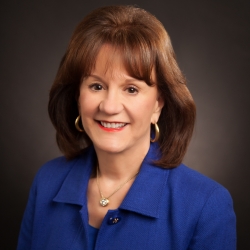Billions in education contracting opportunities flowing from ARP
 The much-anticipated funding made available by the American Rescue Plan (ARP) is now moving. The U.S. Department of Education (ED) has released $81 billion in funding that is destined to reach public school districts in every state. This first release of funding represents about two thirds of what is available for K-12 school districts. The remaining third requires school officials to report spending plans to the ED.
The much-anticipated funding made available by the American Rescue Plan (ARP) is now moving. The U.S. Department of Education (ED) has released $81 billion in funding that is destined to reach public school districts in every state. This first release of funding represents about two thirds of what is available for K-12 school districts. The remaining third requires school officials to report spending plans to the ED.
The initial funding, however, will not flow directly to school officials. Instead, it goes first to education agencies in each state, and the state officials are required to allocate the funding to school districts based on federal Title 1 formulas designated by Congress.
It is staggering to grasp the depth of planning that was required to allocate the funding to school districts along with all the other funding in the $1.9 trillion bill. Not only does the ARP outline funding amounts available in more than 100 categories, it also outlines how the federal funding is to be distributed, the required rules for spending it, and the reporting guidelines, grant programs, and numerous timelines.
The total amount allocated for public K-12 school districts is $123 billion. Spending rules require that the money be used to reopen schools safely, help students overcome learning losses as a result of the pandemic, purchase equipment and services needed to modernize school facilities, and provide funds for summer school activities. Another $2.75 billion is available for private K-12 schools.
State education agencies are eligible to keep about 10 percent of the allocation if the funds are used to lessen learning loss, enhance summer educational initiatives, and/or provide services related to afterschool programs. Another $7.2 billion is earmarked for the E-rate program that provides better connectivity to homes and libraries. ARP provides $3 billion to support students with disabilities and $800 million for education and wraparound services for homeless children.
Early indications are that school officials will have similar spending plans. Most school districts will address modernization efforts for old and outdated building facilities that are inefficient to operate. Spending will be high on technology upgrades and health safety initiatives will be common. A brief overview of some spending plans already announced follows.
Pennsylvania
The Philadelphia School District will receive about $1.2 billion and plans to invest $350 million over the next four years to improve summer learning activities and $325 million to modernize aging buildings. According to the U.S. Government Accountability Office, expenses that are permissible to modernize buildings include HVAC systems and other energy-saving programs. Enhancing ventilation would qualify as a modernization improvement effort. Pandemic prevention, cleaning staff, and other maintenance needs would meet spending criteria.
Arizona
The Tucson Unified School District plans to upgrade technology and safety related initiatives. The Sunnyside Unified School District estimates it will take three years to recover academically from a year of instruction disrupted by the pandemic, so it will use some of its spending allocation to enhance educational programs and upgrade its technology.
Ohio
Many school districts are eligible to receive exceptionally large amounts of funding, and the new funding comes before some districts have spent funding from the COVID Relief ACT of 2020. For instance, $4.5 billion will flow to school districts in Ohio. Schools in Cleveland will receive $289.34 million, and planning documents indicate that approximately $600 million will be allocated to technology purchases.
The Columbus City Schools will receive $288.69 million. This new funding for Columbus exceeds the $130.78 million already awarded in the second round of Elementary and Secondary School Emergency Relief (ESSER) funds and the $30.94 million in the first round of the same grant funding. Ohio’s governor has asked all districts to create academic recovery plans for submission to the state by April 1.
California
The American Rescue Plan Act provides an estimated $908 million in funding to the San Diego County school districts and charter schools. Some San Diego school districts that have been closed plan to reopen in April, while others may wait until May or July. About 20 percent of the ARP funding is allocated for addressing learning loss but school officials have significant flexibility in how the rest of the funding may be used. For example, purchasing can include cleaning expenses, education technology, and building upgrades.
California’s governor has announced that schools not open by April 1 will be at risk of sacrificing some of the $6.6 billion in reopening funding incentives provided by the state. California’s “Safe Schools for All” plan is in addition to the ARP funding.
South Carolina
South Carolina public schools will receive $2.1 billion in addition to the $1.1 billion already received after passage of the CARES Act last summer and the supplemental COVID-19 response bill that passed in December. Plans have been announced to spend large amounts of the funding on improvement of school buildings, technology, and safety of students.
Arkansas
Arkansas education leaders are discussing priorities for spending more than $500 million of grants. Technology funding is a high priority along with overall modernization efforts and connectivity upgrades.
Almost all ARP funding purchasing will include private-sector providers of goods and services. There is no doubt that the new funding will boost the country’s economy significantly. And, companies of every size and type will find an abundance of contracting opportunities.

 512-531-3900
512-531-3900 Request More Info
Request More Info
